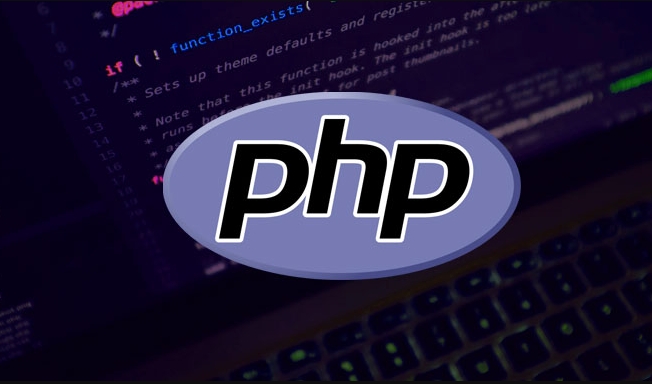date_create_from_format is used to parse time strings in non-standard format to generate DateTime objects. When you get a non-ISO8601 standard time string such as "25/12/2024 15:30" or "December 25, 2024", you can use this function to specify the format to parse. The usage method is DateTime::createFromFormat('format', 'time string'), for example, match "25/12/2024 14:30" with 'd/m/YH:i'. Common format characters include d (date), m (month), Y (year), H (hour), i (minute), etc. If the format does not match the string, the function may return false, so you need to check the return value to avoid errors.

Let’s talk about the key point directly: Use the PHP function date_create_from_format to parse time strings according to the specified format and generate a DateTime object. This function is very practical when dealing with non-standard time formats.

When will date_create_from_format be used?
When the time string you get is not a standard format (for example, it is not an ISO8601 or RFC format), and you want to convert it into a DateTime object for subsequent operations, date_create_from_format comes in handy.

For example, when you receive a form submission time is "25/12/2024 15:30" , or "2024年12月25日" , the default strtotime of PHP may be inaccurate in parsing. At this time, you can use this function to manually specify the format to create a time object.
How to use this function? Basic syntax
Function prototype:

DateTime::createFromFormat(string $format, string $datetime, DateTimeZone $timezone = null): DateTime|false
Or use process writing:
date_create_from_format(string $format, string $datetime, ?DateTimeZone $timezone = null): DateTime|false
To give a simple example:
$date = DateTime::createFromFormat('d/m/YH:i', '25/12/2024 14:30'); echo $date->format('Ymd H:i'); // Output 2024-12-25 14:30
Here 'd/m/YH:i' is the format of your input time, which must be strictly corresponding to the following string.
How to write common formats? Description of several commonly used placeholders
Here are some commonly used format characters descriptions:
-
d: date, double digits (01 to 31) -
m: month, double digits (01 to 12) -
Y: Four-digit year -
H: hours (24-hour system) -
i: minutes -
s: seconds -
A/a: AM/PM (upper case or lower case)
Let's give an example in Chinese format:
$date = DateTime::createFromFormat('Y year m month d day', 'December 25, 2024'); echo $date->format('Ym-d'); // Output 2024-12-25
Note: If the format and the actual string passed in are inconsistent, the function may return false.
Where errors are prone to use
- If the format is written incorrectly , such as writing
Yasy(two-digit year), it may lead to parsing errors. - Ignore spaces or separators , such as
-and:in the middle of'dmY H:i'to match the string exactly. - The return value is not checked whether it is false . If the parsing fails, it will cause an error.
Suggestions plus judgment:
$date = DateTime::createFromFormat('d/m/Y', '30/02/2024');
if ($date) {
echo $date->format('Ym-d');
} else {
echo 'parsing failed';
}Basically all this is it. This function is not complicated to use, but it is very important to write the format correctly.
The above is the detailed content of php date create from format example. For more information, please follow other related articles on the PHP Chinese website!

Hot AI Tools

Undress AI Tool
Undress images for free

Undresser.AI Undress
AI-powered app for creating realistic nude photos

AI Clothes Remover
Online AI tool for removing clothes from photos.

Clothoff.io
AI clothes remover

Video Face Swap
Swap faces in any video effortlessly with our completely free AI face swap tool!

Hot Article

Hot Tools

Notepad++7.3.1
Easy-to-use and free code editor

SublimeText3 Chinese version
Chinese version, very easy to use

Zend Studio 13.0.1
Powerful PHP integrated development environment

Dreamweaver CS6
Visual web development tools

SublimeText3 Mac version
God-level code editing software (SublimeText3)

Hot Topics
 What are some best practices for versioning a PHP-based API?
Jun 14, 2025 am 12:27 AM
What are some best practices for versioning a PHP-based API?
Jun 14, 2025 am 12:27 AM
ToversionaPHP-basedAPIeffectively,useURL-basedversioningforclarityandeaseofrouting,separateversionedcodetoavoidconflicts,deprecateoldversionswithclearcommunication,andconsidercustomheadersonlywhennecessary.StartbyplacingtheversionintheURL(e.g.,/api/v
 How do I implement authentication and authorization in PHP?
Jun 20, 2025 am 01:03 AM
How do I implement authentication and authorization in PHP?
Jun 20, 2025 am 01:03 AM
TosecurelyhandleauthenticationandauthorizationinPHP,followthesesteps:1.Alwayshashpasswordswithpassword_hash()andverifyusingpassword_verify(),usepreparedstatementstopreventSQLinjection,andstoreuserdatain$_SESSIONafterlogin.2.Implementrole-basedaccessc
 What are the differences between procedural and object-oriented programming paradigms in PHP?
Jun 14, 2025 am 12:25 AM
What are the differences between procedural and object-oriented programming paradigms in PHP?
Jun 14, 2025 am 12:25 AM
Proceduralandobject-orientedprogramming(OOP)inPHPdiffersignificantlyinstructure,reusability,anddatahandling.1.Proceduralprogrammingusesfunctionsorganizedsequentially,suitableforsmallscripts.2.OOPorganizescodeintoclassesandobjects,modelingreal-worlden
 What are weak references (WeakMap) in PHP, and when might they be useful?
Jun 14, 2025 am 12:25 AM
What are weak references (WeakMap) in PHP, and when might they be useful?
Jun 14, 2025 am 12:25 AM
PHPdoesnothaveabuilt-inWeakMapbutoffersWeakReferenceforsimilarfunctionality.1.WeakReferenceallowsholdingreferenceswithoutpreventinggarbagecollection.2.Itisusefulforcaching,eventlisteners,andmetadatawithoutaffectingobjectlifecycles.3.YoucansimulateaWe
 How can you handle file uploads securely in PHP?
Jun 19, 2025 am 01:05 AM
How can you handle file uploads securely in PHP?
Jun 19, 2025 am 01:05 AM
To safely handle file uploads in PHP, the core is to verify file types, rename files, and restrict permissions. 1. Use finfo_file() to check the real MIME type, and only specific types such as image/jpeg are allowed; 2. Use uniqid() to generate random file names and store them in non-Web root directory; 3. Limit file size through php.ini and HTML forms, and set directory permissions to 0755; 4. Use ClamAV to scan malware to enhance security. These steps effectively prevent security vulnerabilities and ensure that the file upload process is safe and reliable.
 What are the differences between == (loose comparison) and === (strict comparison) in PHP?
Jun 19, 2025 am 01:07 AM
What are the differences between == (loose comparison) and === (strict comparison) in PHP?
Jun 19, 2025 am 01:07 AM
In PHP, the main difference between == and == is the strictness of type checking. ==Type conversion will be performed before comparison, for example, 5=="5" returns true, and ===Request that the value and type are the same before true will be returned, for example, 5==="5" returns false. In usage scenarios, === is more secure and should be used first, and == is only used when type conversion is required.
 How can you interact with NoSQL databases (e.g., MongoDB, Redis) from PHP?
Jun 19, 2025 am 01:07 AM
How can you interact with NoSQL databases (e.g., MongoDB, Redis) from PHP?
Jun 19, 2025 am 01:07 AM
Yes, PHP can interact with NoSQL databases like MongoDB and Redis through specific extensions or libraries. First, use the MongoDBPHP driver (installed through PECL or Composer) to create client instances and operate databases and collections, supporting insertion, query, aggregation and other operations; second, use the Predis library or phpredis extension to connect to Redis, perform key-value settings and acquisitions, and recommend phpredis for high-performance scenarios, while Predis is convenient for rapid deployment; both are suitable for production environments and are well-documented.
 How do I perform arithmetic operations in PHP ( , -, *, /, %)?
Jun 19, 2025 pm 05:13 PM
How do I perform arithmetic operations in PHP ( , -, *, /, %)?
Jun 19, 2025 pm 05:13 PM
The methods of using basic mathematical operations in PHP are as follows: 1. Addition signs support integers and floating-point numbers, and can also be used for variables. String numbers will be automatically converted but not recommended to dependencies; 2. Subtraction signs use - signs, variables are the same, and type conversion is also applicable; 3. Multiplication signs use * signs, which are suitable for numbers and similar strings; 4. Division uses / signs, which need to avoid dividing by zero, and note that the result may be floating-point numbers; 5. Taking the modulus signs can be used to judge odd and even numbers, and when processing negative numbers, the remainder signs are consistent with the dividend. The key to using these operators correctly is to ensure that the data types are clear and the boundary situation is handled well.






